SEARCH


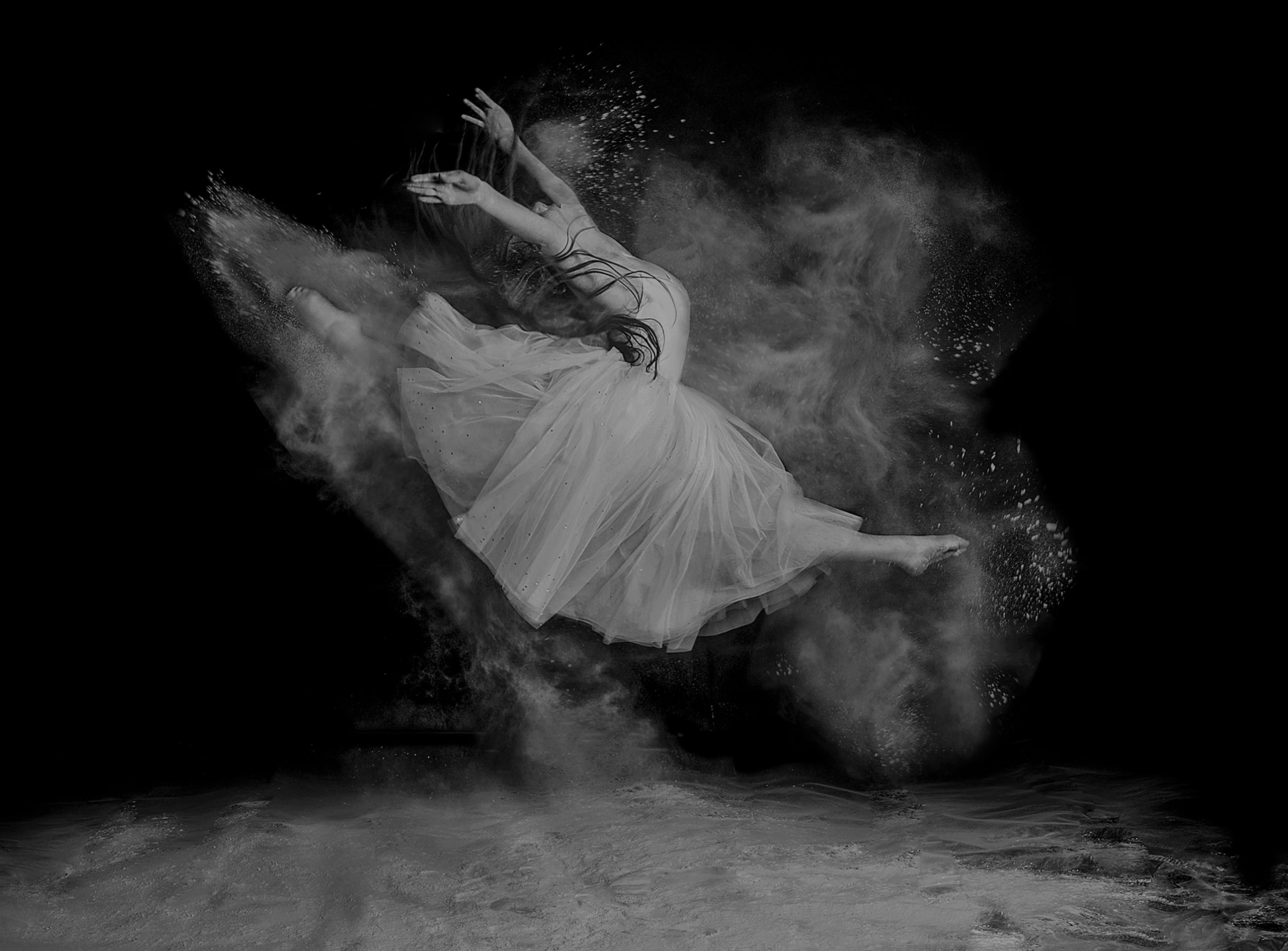

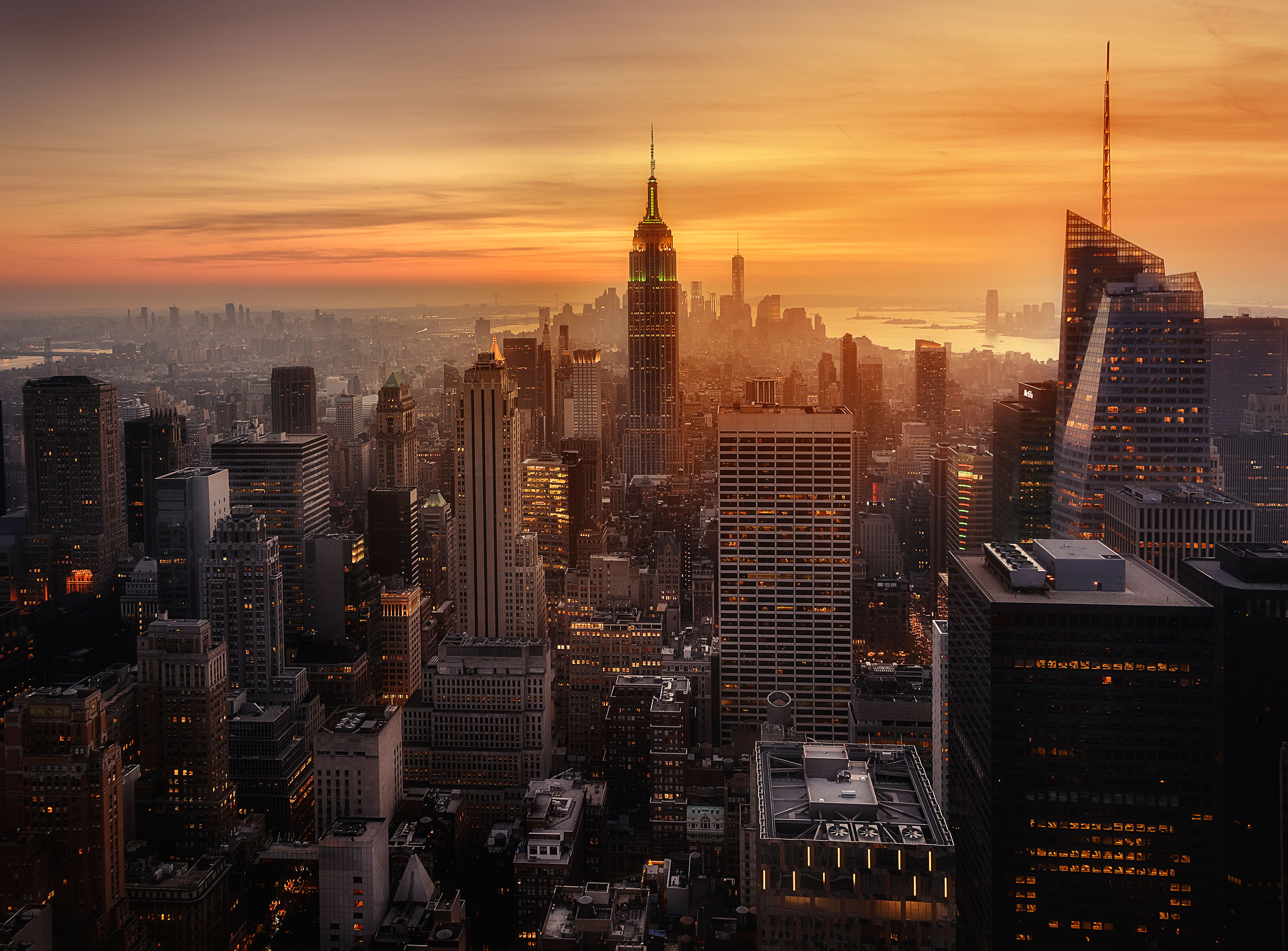
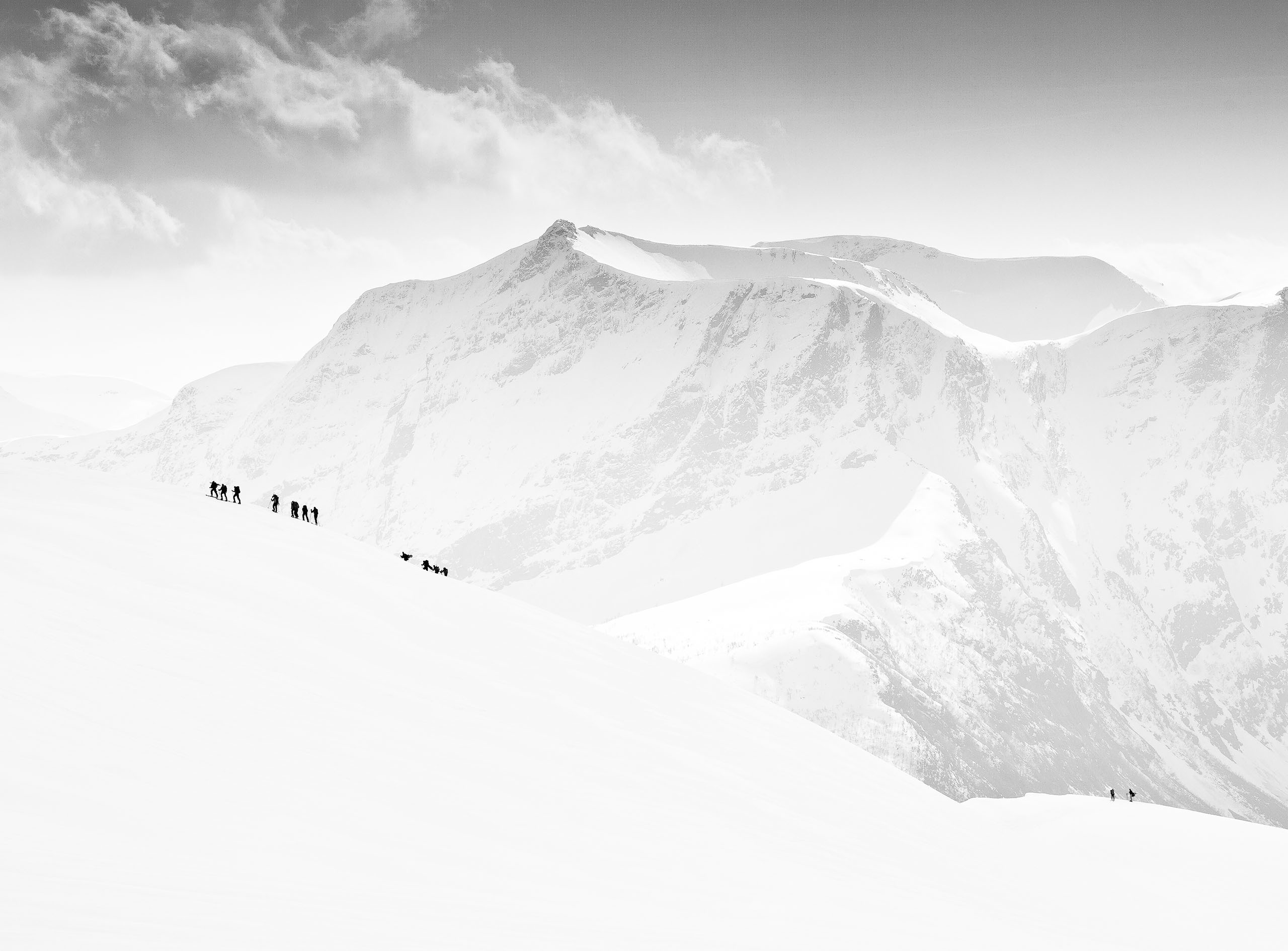
|
|
|
|


by Yvette Depaepe
Published the 7th of November 2025
We’re delighted to announce Raceala Elena as a new Head Curator joining the team at 1x.
Many of you will remember her insightful interview, where she shared her passion for artistic excellence, her deep understanding of visual storytelling, and her belief in the power of photography to connect emotion and vision.
Elena kindly took the time to respond to a few questions, focusing particularly on her role as Head Curator.
In what ways has your artistic journey shaped your curatorial philosophy?
Over time, curatorial practice has taught me to value both the process and the perspective. I have discovered that every detail matters, and that striking the right balance between intuition and analysis transforms a simple image into an authentic experience for the viewer.
I have learned to perceive light, texture, presence and absence much more easily, as well as silence and effervescence. I have also learned to capture essence and emotion, and technique and message.
Ultimately, my curatorial philosophy mirrors my photographic philosophy: to select images that encourage contemplation and depict worlds that exist or could exist, revealing both the visible and the invisible.
‘The road’
‘Integrated’
What inspires you most about photographers in the 1x community?
The photographers in the 1x community are a huge source of inspiration for many photographers, including myself. They present places and people, familiar spaces from different angles, nature and real or imaginary worlds from unimaginable perspectives. Their images surprise with their authenticity and creativity, provoking deep emotions.
‘Passing through’
‘Walking with the fog’
'Undercover'
What do you think makes a photograph excellent?
For me, a truly good photograph is one that you keep going back to look at. It conveys more than it shows, combining aesthetic, technical and emotional elements in an authentic way. It tells a story, expresses a story, documents a moment or makes an artistic statement.
While the rules of composition, exposure and technique can contribute to an excellent photograph, a photograph that truly has something to convey also knows when to break those rules.
untitled
What makes an image timeless?
In my opinion, an image can be considered timeless if the viewer can see themselves in it, regardless of time or space.
From this perspective, the timelessness of a photograph lies not only in its visual aspect, but also in its ability to trigger memories or provoke questions that transcend the limits of time. A timeless image 'speaks' to each viewer personally; it has a composition that transcends passing trends, capturing the essence of a moment with refined simplicity and avoiding unnecessary details. Like a painting that can never be fully deciphered, a timeless image allows the viewer to always discover new meanings and details.
‘Long day’s journey into tomorrow’
‘Childhood’
How can technical perfection be balanced with emotional impact?
The key to achieving this balance is recognising that technique is a language, not the message itself. While technical mastery gives me control and precision, it is emotion that brings the image to life.
When taking a photograph, I ask myself what the moment needs. Some images require rigour, composition and correct exposure because their power lies in clarity. Others require imperfection; blurring, grain or shadows can convey more emotion than a technically flawless image ever could.
Urban illusion
‘Stories from Annecy’
‘Tech’
How do you approach the challenge of selecting works from so many outstanding submissions?
With so many excellent photographers on 1x, this selection process is particularly meticulous. Selecting the best photos requires finesse and balance in terms of aesthetics, concept and theme.
In my view, a selected photo should capture the viewer's attention, appear authentic, and evoke emotion. While I evaluate composition, light, colour and technique, I select based on originality and creativity. I select photos that offer a fresh perspective or unique interpretation of the theme or moment, avoiding overused concepts.
I believe that an image can 'breathe' visual authenticity, even if it is not technically perfect.
‘The veil’
‘New Identity’
With her refined eye, dedication to creative authenticity, and years of experience within the 1x community, Elena will help to uphold and expand the artistic standards that make 1x unique.
 | Write |
 | Igor Kopcev PRO Congratulations, dear Elena! creative success! |
 | Brian Jackson PRO I am happy to see new blood in any organization, and this hopefully Elena will bring new perspective to 1x. I might even get involved again |
 | Roberto Miniero PRO Congratulations, my sincere congs dear Elena. I simply repeat the words of Svetlana. You pics are really an inspiration for me |
 | Svetlana Povarova Ree PRO Congratulations, dear Elena! I am very inspired by your work. Welcome and good luck! |
 | Giovanni Cavalli PRO I am very, very happy for you, dearest Elena. The value of your images, of the thoughts they represent and of your person that I got to know directly are truly outstanding! |
 | Vito Muolo PRO Sincere congratulations. I love your way of interpreting
photography and the sensitivity that shines through in your images. |
 | Francisco Villalpando PRO Congratulations Elena, your comments and reflexions inspire me to submit better photographies. Welcome! |
 | Carlos Hernandez Martinez PRO Enhorabuena Elena! grandes reflexiones |
 | Adolfo Urrutia PRO Congratulations, Elena, on your appointment and also for your reflections. Thanks a lot, Yvette. |
 | Carolina Garcia-Paris PRO My sincere congratulations, Elena! Your passion for light, emotion, and storytelling is going to shine as Head Curator! Can’t wait to see 1x glow under your care. Big thanks to Yvette for the warm intro and all you do for us at 1x. |
 | Hadi Malijani PRO Absolutely amazing and stunning, congratulations to my artist friend. |
 | Gian Corrado DONATI PRO Stunning and inspiring work ! Congratulations Elena and welcome !!! |
 | Robert Bolton PRO Welcome Elena and congratulations. I really like that last photo “New Identity”. Great work. |
 | Robert Bolton PRO Welcome Elena and congratulations. |
 | Stephanie Kleimann PRO Congratulations Elena! |
 | Mikhail Potapov CREW Congratulations, dear Elena! Welcome to the crew! |
 | Marius Cinteza CREW Many congrats Elena and welcome aboard!! |
 | seong jin Choi PRO Congratulations
Elena |
 | Raceala Elena CREW Many thanks!!! |
 | Eiji Yamamoto PRO Congratulations, dear Elena! Thank you so much for the information, dear Yvette. |
 | Raceala Elena CREW Eiji, thank you very much!! |
 | Adrian Popan PRO One of the best photographers I have admired the work of, well deserved Elena, congrats! |
 | Raceala Elena CREW Thank you so much for your beautiful words, Adrian!!! |
 | Grigore Roibu PRO Mii de felicitări! |
 | Raceala Elena CREW Multumesc tare mult, Grigore!! |
 | CARDI/Richard Piercy PRO Inspiring Elena 🫶 |
 | Raceala Elena CREW Thank you so. so much!!! |
 | Cristian Pavel PRO Felicitari ! |
 | Raceala Elena CREW Multumesc frumos, Cristian!!!
|
 | X-FlyingKN PRO Congrats Elena and many thanks Yvette ! |
 | Raceala Elena CREW Thank you very much!!!
|
 | Miro Susta CREW Welcome am board Raceala and congratulations on your wonderful photo work |
 | Raceala Elena CREW Thank you very much, dear Miro!!! |
 | Dazhi Cen PRO A treasure to the dynamic team! |
 | Raceala Elena CREW Thank you so, so much, dear Dazhi!! |
 | Andy Dauer PRO heartfelt congrats, Elena! and many thanks to Yvette for the introducing! |
 | Raceala Elena CREW Thank you so much, dear Andy!! |
 | Angelika Vogel PRO Hello Elena, Congratulations! Your Portfolio is amazing, special! I like your photos very much and you will be a fantastic Head Curatorin! Thank you so very much also to Yvette for this excellent presentation! |
 | Raceala Elena CREW Thank you so much for your beautiful words, dear Angelika!! |
 | Chris Hamilton PRO Great images and ideas. |
 | Raceala Elena CREW Thank you dear Chris!! |
 | Linda Lu PRO Congratulations, Elena! An excellent overview of both the technical and emotional aspects of photography, showcased through a beautiful series of images. Thanks Yvette and Elena for sharing! |
 | Raceala Elena CREW Dear Linda, thank you very much for your kind words!! |
 | Julien Oncete PRO How wonderful!Many congratulations,Elena! |
 | Raceala Elena CREW Thank you so much, Julien!!! :) |
 | James Lu PRO Congrats! Your works are so impressive! |
 | Raceala Elena CREW James, thank you very much!! |
 | Patrick Compagnucci PRO Congratulations Elena, I'ma big fan of your work! Warmest regards, Patrick |
 | Raceala Elena CREW Thank you so much, dear Patrick!! |
 | Gabriela Pantu PRO Congratulations, dear Elena, you are an amazing artist and you are just perfect as head curator.Wishing you to enjoy your path in the team.❤️ |
 | Raceala Elena CREW Thank you so, so much for your beautiful words, Gabi!!! <3 |
 | Leonid Yermoshkin PRO Congratulations, dear Elena! |
 | Raceala Elena CREW Thank you very much, dear Leonid!!
|
 | Slawomir Kowalczyk IAAP CREW Heartfelt congratulations, Elena. I'm so glad you'll be joining us. Your work is truly inspiring, and I'm sure you'll bring many interesting elements to the team. Good luck 👌 |
 | Raceala Elena CREW Dear Slawomir, I am honored to be part of the 1x team. Thank you very much for the wishes and kind words!! |
 | Elizabeth Allen CREW Congratulations, Elena. I'm sure you will be a great asset to the team, and your work is truly inspiring. Thanks to Yvette for introducing Raceala! |
 | Raceala Elena CREW Thank you very much, dear Elizabeth, for your kind words!! |
 | Jane Lyons CREW How fabulous! Elena, your work is wonderful and your influence and aesthetics will be a wonderful addition to 1x. |
 | Raceala Elena CREW Thank you so, so much, dear Jane for your beautiful words!! |
 | Emilian Avramescu PRO Congrats, Elena! |
 | Raceala Elena CREW Emilian, thank you very much!! :) |
 | av peteghium Elena is undoubtedly a very, very good recruit for 1x as head curator and for the site in general because she is also a wonderful editor. |
 | Raceala Elena CREW Thank you so much, dear Laurent for your kind words!! <3 |
 | Wanghan Li PRO Excellent works with the detailed explanation and information! Learning. Thanks a lot! |
 | Raceala Elena CREW Thank you so much, dear Li!! |
Tutorial led by Editor Michel Romaggi in collaboration with the author Susumu Sasaki
Edited and published by Yvette Depaepe, the 5th of November 2025
I prefer the soft light of streetlights to the harsh light of the sun. I wanted to take a photo of the city at night, lit by streetlights, so I went to Otemachi in Tokyo, a place where I often take photos.
As I was walking down the street, I came across an open-air seating area where people were eating. They were illuminated by the streetlights.
Initially, I thought about taking a photo of them. Then I saw a woman in a kimono walking towards the entrance of the restaurant on the terrace, so I decided to focus on her instead. I took several shots while the restaurant's lights spotlighted her.
From the several photos I took, I selected the one with the best lighting and the woman's posture.

Equipment and settings: Nikon Z50II
NIKKOR Z DX 16-50mm f/3.5-6.3 VR
The camera settings were manual mode, 1/200, f/8, ISO AUTO, and -1.0 exposure.
No filters were used. I mostly use these settings.
Post-Processing
I use the following tools for post-processing: Adobe Lightroom Classic - Adobe Photoshop 2024 - Nik8 Color Efex
Lightroom
I Convert the selected RAW file to black and white using Lightroom's >BW and adjust the overall brightness and contrast.
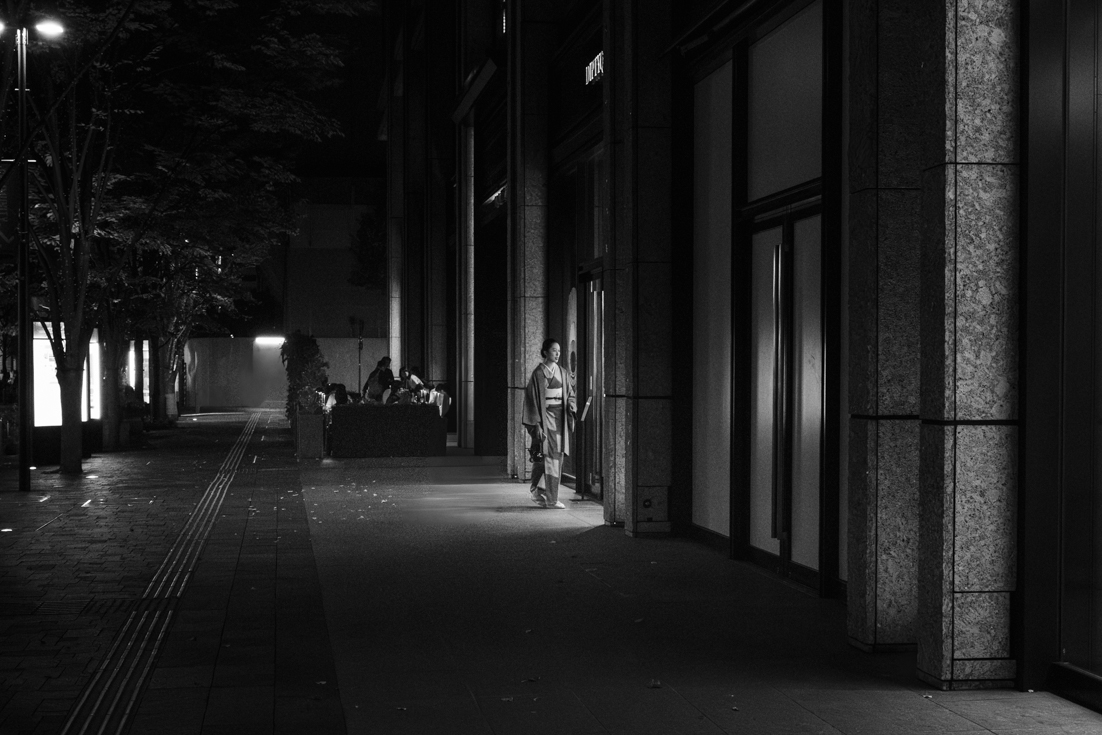
I primarily process in black and white. This is because I believe that black and white, with its simple color information, allows me to process the image as I envision it without being limited by color information.
Next, I use the Radial Gradient mask to darken the surrounding area of the woman, the main subject, to make her stand out.
I changed the file back from black and white to color and set the profile to Adobe Standard to lighten the overall colors.
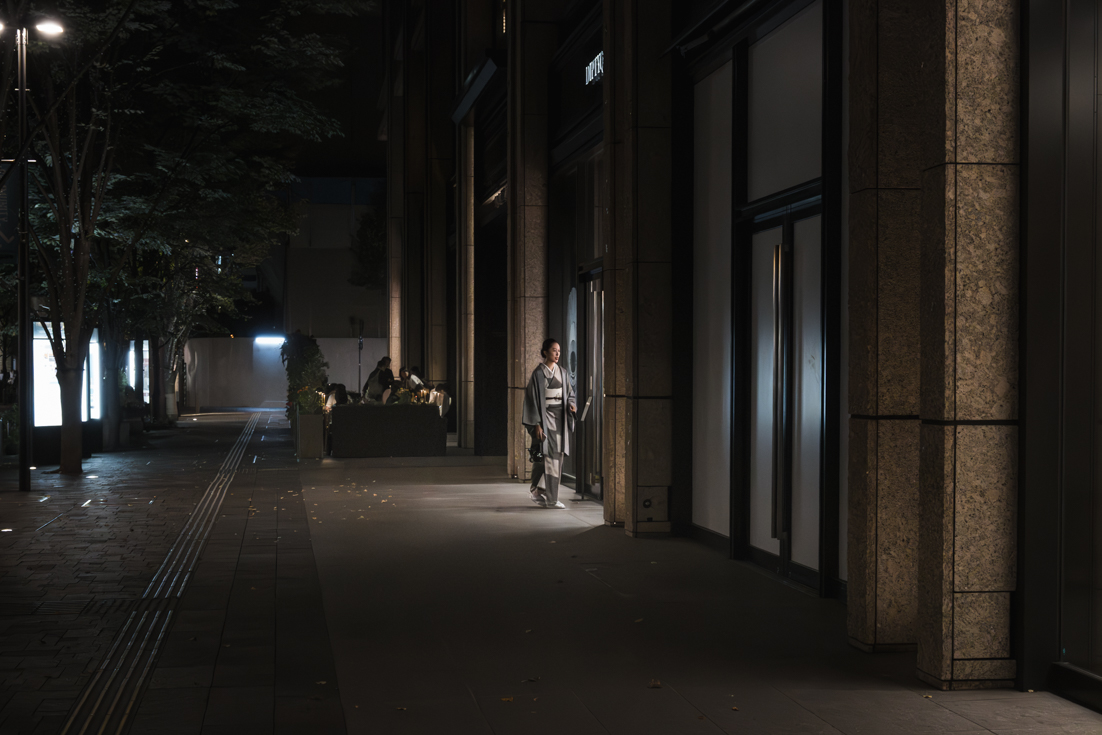
I further reduced the vibrance to make certain colors less noticeable.
I then adjusted the mask I created in black and white to adjust the brightness of the surrounding areas so the main character wouldn't stand out too much.
After adjusting the overall colors, I used AI noise reduction.
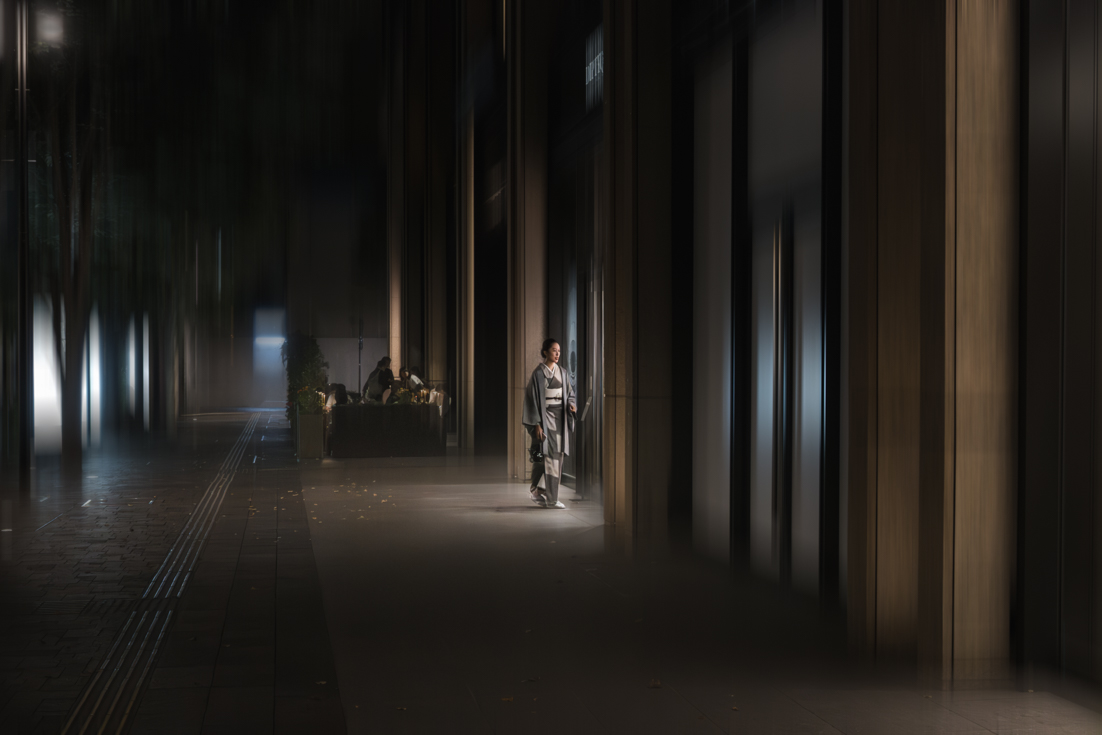
Photoshop
I sent the file to Photoshop, converted it into a smart object, and duplicated it. I added a blur by using the "Move Blur" filter with an angle of 90° and a distance of 302 pixels.
I added a layer mask to the blurred object and used the brush tool to erase the blur from the main character and the surrounding area.
This is to draw the eye to the main character. The brush settings were 24% opacity and 24% flow.
I was conscious of creating a gradient so that the blurred areas and the areas where the blur had been removed would not be clearly defined.
=> Lightroom: I returned to Lightroom and adjusted the overall brightness. In this case, I made it a little darker, setting it to -0.34.
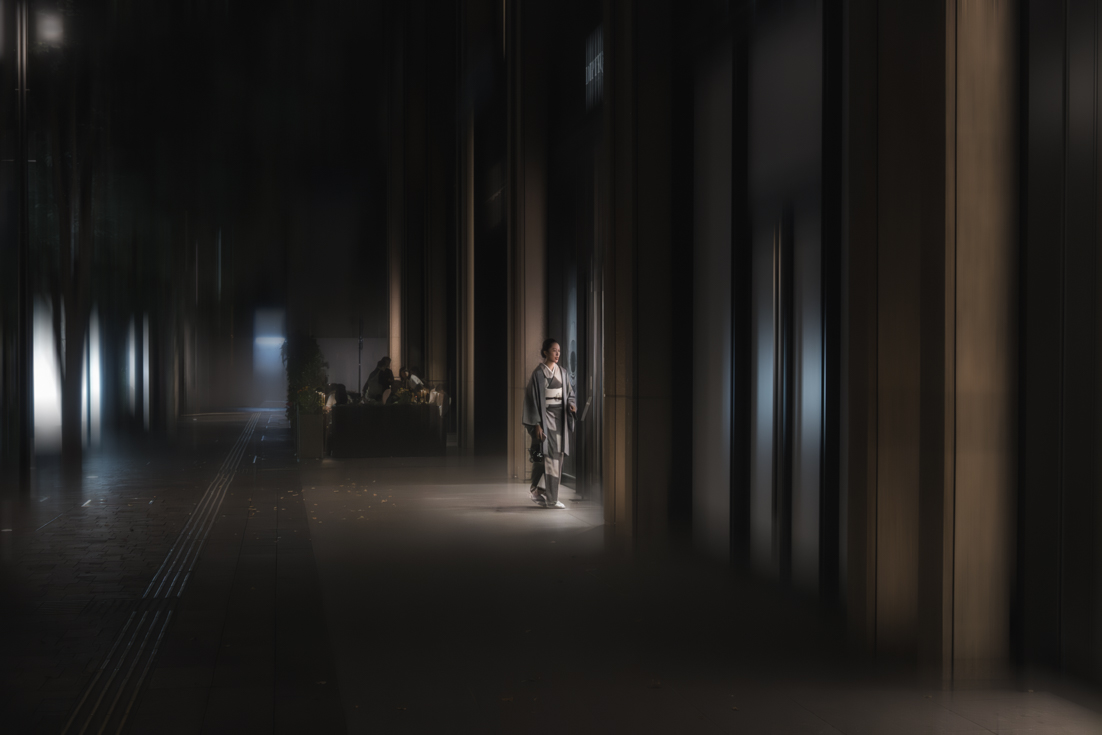
=> Nik 8 color effects: I sent the file to Nik8 Color Efex and added the "Glamour Glow" filter, setting it to the default.
I then added "Pro Contrast" to correct color cast. Next, I added "Skin Softening" to the default setting.
I went back to Lightroom to check that it was what I had in mind. Since the overall color tone was yellow, I added a little blue in the WB and reduced the clarity a little.
Finally, I cropped the image to fine-tune the position of the subject.
Biography
I live in Chiba Prefecture in Japan. I mainly take photos in Tokyo.
I started taking photos around 15 years ago. Before that, I wasn't particularly interested in photography.
One day, I saw a Nikon camera that a friend had — I forget the model — and I wanted one for myself, so I bought one, and that's how I got into photography.
 |
 | t.yoshy PRO 撮影後の詳細なプロセスの説明ありがとうございます。とても参考になりました。大手町はとても素敵な所ですよね。私もこんな素敵な作品づくりができるよう頑張ります。ありがとうございました。 |
 | Yohei Kawashima PRO I found the article very interesting. Thank you very much. |
 | SUSUMU SASAKI PRO 川島さん
コメント有難うございます。 |
 | Hadi Malijani PRO Thank you for your dear friend 🙏 |
 | SUSUMU SASAKI PRO Thank you for your comment. |
 | Marion Keijzer PRO Heel veel werk, maar wat een weergaloos resultaat. Prachtig, doet het je niet na ook niet met deze beschrijving. Nog heel veel mooie foto's je toegewenst. Marion |
 | SUSUMU SASAKI PRO Bedankt voor je reactie, Marion. Het is bemoedigend. |
 | Angelika Vogel PRO Thank you so very much for this impressive works Susuma and thank you also so much Yvette and Michel! |
 | SUSUMU SASAKI PRO Thank you for your comment. I'm glad you liked it. |
 | Dazhi Cen PRO Thanks so much. Very informative, and step by step guidance. |
 | SUSUMU SASAKI PRO Thank you for your comment. |
 | Eiji Yamamoto PRO Thank you so much for the inspiring article! |
 | SUSUMU SASAKI PRO コメント有難うございます。 |
 | joanaduenas PRO Extraordinary work, Susumo Sasaki! I love the overall tone of your photos and the atmosphere you create in each one. Congratulations! |
 | SUSUMU SASAKI PRO Thank you for your comment. |
 | JA Ruiz Rivas PRO Excelente explicacion del proceso. ¡ Felicidades ! |
 | SUSUMU SASAKI PRO Gracias por su comentario. |
 | Molly Fu APA PRO Great post-processing skills, love it...congrats and thanks for sharing! |
 | SUSUMU SASAKI PRO Thank you for your comment. I'm happy. |
 | An excellent article. I loved the image and the author's generosity in explaining the image processing in such detail. Congratulations. Thank you so much for sharing.
|
 | SUSUMU SASAKI PRO Thank you for your nice comment |
 | sherry ma PRO Thank you very much for the detailed steps of your post processing. I love the mood of this street photo. I learned something and will try the technique someday. |
 | SUSUMU SASAKI PRO Thank you for your comment. |
by Yvette Depaepe
Published the 3rd of November 2025
Angelika Vogel’s work touches on many different themes, but she always considers it important for stories or a particular atmosphere to be revealed in the compositions. As she says – something to aspire to: “Constantly seeing the world as if for the first time” — Michael Bresson talking about his father, Henri Cartier-Bresson. She is a remarkable artist with a charming personality we all would love to meet, especially after reading this interview.
‘The striped dress’
First of all, I would like to thank Yvette for inviting me to showcase some of my photographs in this magazine.
My name is Angelika Vogel. I live in Berlin, where I work as an art teacher in primary schools.
‘River mouth’ (Tasmania)
‘Hazy Melbourne’
My whole family is passionate about photography and art, and we love travelling. I have had the opportunity to visit beautiful places around the world and experience breathtaking natural landscapes, with an almost overwhelming abundance of colours and shapes, as well as seemingly deserted regions with endless expanses.
‘On a Pier …’
‘In the Valley of Geysers’ (Iceland)
‘Westfjords Idyll’ (Iceland)
I bought my first camera, a Minolta 7000, 40 years ago, more out of a whim than a genuine desire to learn the art of photography.
I started out taking landscape and children's photographs.
As I worked in a school, I had the opportunity to photograph children in a wide variety of situations. I had the idea of creating a book with the students featuring texts written by children about their wishes, dreams and fears. The result was a moving collection of texts, which I paired with my photographs of the children. This work was published by Herder Verlag, Freiburg, under the title Ich möchte eine Blume sein ("I would like to be a flower"). I have also had reading books featuring children's paintings and my texts published and used by the German Ministry of Education.
My photography is inspired by the diversity of motifs and details in nature, the expressions on people's faces in cities, and the movement of people — their gestures and emotions, and the constant transformation through light, colour, shadow, and darkness. Consequently, my work touches on many different themes, but it is always important that stories or a particular atmosphere are revealed in the compositions.
Technical perfection is generally not the most important criterion for me when creating an image. Of course, when photographing architecture, where symmetry, clear, strict forms and lines are paramount and the unique character and individuality of an architect are to be portrayed, the appropriate technique is essential.
‘The Black Room’
‘It’s been a long time …
My current cameras are the Canon EOS R6 mirrorless camera and the Canon EOS 6D. During the analogue era, I used various Minolta models. I mainly photographed my models using Ektachrome 400 slide film, which I developed in the lab at either ISO 800 or 1600 to achieve a grainy, vintage look. I have led nude photography workshops in Lanzarote, Fuerteventura, mainland Spain, Berlin, the Seychelles and Bali, and most recently in Paris. Some of these workshops were initiated by Minolta. My work has also been featured in several photography magazines.
‘At the Beach in Nice’
‘Dip Falls’
‘The red Umbrella’
One of my favourite photos was taken in the southern Black Forest in Germany. I went out early one morning to photograph the pristine wintry landscape. It had snowed all night and the early morning revealed the most beautiful shades of powdery blue and white, with filtered sunlight making the textures and snow crystals sparkle. I was fascinated by the solitary small plant, a true survivor, standing amidst the many small rounded snow drifts.
‘The Snow Flower’
My favourite photographers are Henri Cartier-Bresson and Sarah Moon.
It was Sarah Moon's photos that inspired me to start taking nude portraits of women and scenes of women in cafés. I still love her style and tonal images, as well as the simple yet impressive scenes and natural poses of her models, without any forced, artificial smiles or contorted limbs.
‘Anna and Torella’
‘Waiting’
‘Norma’
‘Der Tanz’
My future projects: if I had the opportunity, I would like to take part in a photography project in the Sahara or Antarctica to explore the vast, untouched wilderness. And finally, I would like to say that I find the 1x platform for presenting my work appealing and of a high standard.
‘Little Dancers’
Thank you so much for revealing more about yourself and the artist behind your images, Angelika. It is a real pleasure to introduce you to our readers and to those who haven't yet discovered your splendid work.
 |
 | Molly Fu APA PRO “Constantly seeing the world as if for the first time” ...your work is amazing Angelika, I am so impressed, congrats! And as always, thanks to dear Yvette finding so many excellent photographers for us, wonderful interview dear Yvette! |
 | Angelika Vogel PRO I am so happy about your wonderful words dear Molly! Thank you so very much! |
 | sherry ma PRO Dear Angelika, thank you so much for the wonderful collection of impressive images! Congratulations!
Yvette, thank you for bringing such talented artist! |
 | Angelika Vogel PRO Dear Sherry, thank you so very much for your wonderful compliment! Much appreciated! |
 | Jean-Luc BILLET PRO Dear Angelika, I am delighted to rediscover your dreamlike and captivating world here. Congratulations on being featured on 1X. Have a wonderful evening, and see you soon. |
 | Angelika Vogel PRO Hello dear Jean, thank you so very much for your wonderful words!
I am very glad about your compliment! Have a wonderful evening too. See you soon. |
 | Jacob (Jian) Xu CREW Beautiful images and inspiring work, Congrats and Thank you for sharing! |
 | Angelika Vogel PRO Many, many thanks Jacob! |
 | I'm very impressed with Angelica's work! Thank you, Angelica! |
 | Angelika Vogel PRO Thank you so much for your great comment, Evgenii! |
 | Fantastic images. Impressively conveyed. Congratulations Angelica! |
 | Angelika Vogel PRO Thank you so very much dear Jostein! |
 | Rolf Endermann PRO Liebe Angelika
schön,das man auch etwas von der Person hinter der Kamera erfährt .Deine Bilder haben Tiefgang und somit auch eine starke Wirkung auf den Betrachter. |
 | Angelika Vogel PRO Lieber Rolf, danke sehr für deine Worte! Ich freue mich sehr darüber! Liebe Grüße aus Nizza. Angelika |
 | Shaibal Nandi PRO Wonderful collection Angelica. Congratulations |
 | Angelika Vogel PRO Thank you so very much for your great comment Shaibal Nandi! |
 | Erik Engström PRO Fantastic collection of Angelica, inspiring the good work and many thanks to Yvette for bringing it to us |
 | Angelika Vogel PRO Eric, thank you so very much for your wonderful compliment! |
 | Yvette Depaepe CREW Thanks for your appreciation, Erik !!! |
 | Marion Keijzer PRO Ik ben heel groot FAN van je je werk je blik, emoties, verscheidenheid, afwerking en zo kan ik wel even door gaan. Ik vind het fascinerend onroerend mooi. Blij dat jij op dit platform staat en mij laat genieten, Je bent een prachtig voorbeeld. Hartelijk dank Marion |
 | Angelika Vogel PRO Hallo lieve Marion,
Je prachtige gedachten en woorden hebben me erg blij gemaakt! Heel erg bedankt en tot snel.
Hartelijke groeten uit Nice, Angelika |
 | Miro Susta CREW Liebe Angelika besten Dank für interessantes Interview und für die wunderbaren Fotos, ich grüße dich aus Südschwarzwald, and of course many thanks to our Yvette for bringing it to us. |
 | Yvette Depaepe CREW Thank you, Miro ... |
 | Angelika Vogel PRO Vielen, herzlichen Dank lieber Miro für dein großes Kompliment! Ich grüße dich aus Nizza. Liebe Grüße Angelika |
 | Nichole Chen PRO A beautiful and inspiring collection of work. Thank you for sharing. |
 | Angelika Vogel PRO Thank you very much Nichole! |
 | Dazhi Cen PRO Thanks. Beautiful and unique presentation. The mood touches the soul. |
 | Angelika Vogel PRO Dazhi, thank you so much! Much appreciated! |
 | Gabriela Pantu PRO Love your work, dear Angelika, a unique artistic approach, soulful and meaningful.Congratulations and thank you for sharing your thoughts.Thank you dear Yvette, as always <3<3 |
 | Angelika Vogel PRO Thank you so very much dear Gabriela for your great compliment!
I am very happy about this honor of having been published by Yvette! |
 | Yvette Depaepe CREW Thank you, dear Gabriela! |
 | Bole Kuljic PRO Purity of your intentions is inspiring, and your portraits are amazing. Thank you for this lovely story . Yvette, another excellent choice. Thank you. |
 | Angelika Vogel PRO Bole, a big THANK YOU for your wonderful comment! |
 | Yvette Depaepe CREW Yes, Bole ... Angelika is such a talent! |
 | Eiji Yamamoto PRO Dear Angelika, thank you so much for the wonderful interview with great and impressive photos! Dear Yvette, thank you so much as always! |
 | Angelika Vogel PRO Thank you so very much dear Eiji for your wonderful compliment! Much appreciated! |
 | Yvette Depaepe CREW Thanks for your appreciation, Eiji ! |
 | Jane Lyons CREW Your photography is wonderful, Angelika. Thank you! |
 | Angelika Vogel PRO Many, many thanks dear Jane! Wonderful that you like it! |
 | Elizabeth Allen CREW Thank you, Angelika, and congratulations. I enjoyed reading about you and seeing your superb, inspiring collection of photographs. Thanks as always to Yvette. |
 | Angelika Vogel PRO Hello dear Elizabeth, thank you so very much for your wonderful comment! I am happy that you like it! Much appreciated! |
 | Yvette Depaepe CREW Thank you, Elizabeth! |
 | Hugh Warren PRO Nice story, and wonderful photography to match. |
 | Angelika Vogel PRO Herzlichen Dank Hugh! |
 | Imi Koetz PRO Magnificent gallery of diverse photographs !! Congratulations, Ange !! |
 | Angelika Vogel PRO Vielen, herzlichen Dank, Imi! |
by Editor Miro Susta (mirosu)
Edited and published by Yvette Depaepe, the 31st of October 2025
‘a flower for you who have gone’ by Djeff Act
Grief and sorrow are the quiet companions of love — the shadows that appear when something or someone deeply cherished is lost. They remind us of our capacity to feel, to care, and to remember. In exploring grief, we learn not only about pain, but also about resilience, connection, and the slow, tender art of healing.
‘...lost in desperation..’ by Charlaine Gerber
In order to experience happiness, we must understand grief and sorrow. This is a fundamental principle of the world into which we were born, where our feelings and experiences thrive. Experiencing enough grief enriches our inner life, giving us insights that would otherwise prevent our personality from progressing.
......... by Robert
But how can we cope with grief and sorrow? How can we deal with suffering that seems to have no beginning and no end?
‘Loneliness’ by Fernando Alves
‘share sorrow’’ by Gilcan Mete
Grief and sorrow are natural parts of life, but they can be hard to cope with. When these feelings overwhelm us, it can be hard to find our way back to joy and well-being. Whether they are a reaction to a specific event or occur for no apparent reason, their impact on mental health can be significant.
‘Tears’ by Paulo Medeiros
‘Ain't never enough tears’ by hardibudi
Grief and sorrow are like an unexpected storm that occasionally hits the soul with great force. They are natural human reactions to loss, disappointment or other unpleasant life events. Although painful, it is important because it enables one to process what is troubling them.
‘Broken flowers’ by Samanta Krivec
The loss of a beloved one tears apart and leaves behind a deep emptiness. The end of a relationship paralyzes and leaves a feeling of loss. The loss of a job or home takes away our certainty and sense of security. Grief, sorrow, and frequently sadness are constant companions during these moments, accompanying the journey toward acceptance of the loss.
‘Sadness’ by Mirjam Delrue
‘Tears’ by Victoria Glinka
Life changes bring not only joy, but also grief and sorrow. Moving away tears us away from familiar surroundings and friends. A new job can present new challenges and a sense of uncertainty. Even joyful events, such as the birth of a child, can be associated with sadness, for example, due to the loss of a previous way of life.
‘Goodbye my love’ by Angéla Vicedomini
‘no words to describe the feeling‘ by Piet Flour
‘Sadness’ by Sergio Pandolfini
Remembering those we have loved is something that accompanies us throughout our lives. Grief is proof of our humanity. Although grief may initially seem unbearable, its intensity gradually diminishes over time, and we learn to live with our loss.
‘when everything must come to an end’ by Djeff Act
disappointment by Remus Tiplea
As previously mentioned, grief and sorrow are an inevitable part of life. Although they can be painful, they also present an opportunity for personal growth and development.
Here are some proverbs related to this subject:
‘Forever in my heart‘ by Vito Guarino
“What you hold deep in your heart, you cannot lose through death.” Johann Wolfgang von Goethe
‘Black Widow’ by Abel Tonkens
“Grief is the price we pay for love.” Queen Elizabeth II
‘Lost Love’ by Anna Wacker / Martin Wacker
“You are no longer where you were-but you are everywhere we are.” Victor Hugo
‘Living Memories’ by Nadav Dov Boretzki
“They say that whenever something leaves your life, something else comes along to replace it. You left, and the pain came.” Unknown author
For many people, churches, mosques, synagogues and temples are important places for mourning, finding comfort and support, and coming to terms with the loss of a loved one.
‘Alone in the Cathedral’ by Eiji Yamamoto
‘Sacred Atmosphere’ by Miro Susta
‘...but you are alone’ by Tommaso Pessotto
‘Blessed’ by Fernando Alves
As every year, we will celebrate All Saints' Day on Saturday 1 November.
During this time, it is important to remember and to show gratitude to the people who have played a significant role in our lives.
Maybe we didn't even have time to thank them for everything.
Untitled by Anna Kudriavtseva
www.mrsphoto.net
[email protected]
 |
 | sherry ma PRO These images depicted deep emotions of our being! Very moving! Thank you! |
 | Miro Susta CREW In name of all contributing photo authors I wish to thank you dear Sherry |
 | Rolf Endermann PRO Copngrats to your wonderful pictures |
 | Miro Susta CREW Dear Rolf im name of all photo authors I wish to thank you |
 | Rae Zhang PRO These images are moving. |
 | Miro Susta CREW Thank you Rae |
 | Hugh Warren PRO A lovely selection of deep images |
 | Miro Susta CREW Many thanks Hugh |
 | Marie Dubois PRO Très bel hommage pour ce moment de recueillement, illustré par des images expressives et émouvantes, merci infiniment. |
 | Miro Susta CREW Merci beaucoup pour vos paroles touchantes Marie. |
 | Wanghan Li PRO Very impressive and expressive works selected and explained! Thanks a lot! Learning. |
 | Miro Susta CREW We thank you very much dear Wanghan |
 | Yaping Zhang PRO 动人心魄的情感氛围大片,精彩绝伦!刻骨铭心的伤痛表现得淋漓尽致!太牛了 |
 | Yvette Depaepe CREW Thank you, dear friend... In memory of all the loved ones we lost! |
 | Miro Susta CREW Many thanks dear Yaping |
 | so wonderful and so full of emotions, excellent presented in time of the early days of November, thanks a lot both of you Mirko and Yvette |
 | Yvette Depaepe CREW Thank you, Hans-Wolfgang! |
 | Miro Susta CREW Many thanks for nice words of praise dear Hans-Wolfgang |
 | Irma Warth PRO danke für die wunderbaren Bilder und Texte die mich sehr berührt haben. irma |
 | Yvette Depaepe CREW Thanks for your appreciation, Irma ... |
 | Roger Paucton PRO Images merveilleuses, fortes en émotion |
 | Yvette Depaepe CREW Merci au nom de tous ceux qu'on a perdu, Roger! |
 | Immagini raffinate e un BW ben sviluppato |
 | Yvette Depaepe CREW Thanks, Enzo ... |
 | Samanta Krivec PRO Wonderful and meaningful article..Thank you Miro |
 | Miro Susta CREW Many thanks dear Samanta |
 | Kathryn King PRO Wonderful work, I enjoyed the proverbs as well. |
 | Yvette Depaepe CREW Thanks, dear Kathryn! |
 | Nichole Chen PRO Such a moving and beautifully curated collection, thank you for putting it together, dear Yvette and the team. |
 | Yvette Depaepe CREW Thanks dear Nichole! |
 | My sincerest thanks, dear Miro and dear Yvette. It's an honor that two of my photos were chosen. It's a theme that I especially enjoy photographing. Greetings to all. |
 | Yvette Depaepe CREW Thanks Fernando ... Also for your beautiful images in the gallery! |
 | Miro Susta CREW Many thanks dear Fernando |
 | Wonderful and powerful images. Congratulations to everyone! A topic that touches many. I have experienced it myself. I lost my wife this summer. It is the highest price in life that is paid with grief, tears, loss and longing. |
 | Samanta Krivec PRO I am sorry for your loss dear Jostein |
 | Yvette Depaepe CREW My thoughts are we you, Jostein!
|
 | Miro Susta CREW I feel with you dear Jostein, and thank you for your lovely comment to our work |
 | Lourens Durand CREW Touching.... |
 | Yvette Depaepe CREW Thank you, dear Lourens! |
 | Elizabeth Allen CREW Thank you, dear Miro, for this wonderful article with its superb collection of poignant photos. Thanks also to Yvette, as always. |
 | Yvette Depaepe CREW Thanks for your appreciation, dear Elizabeth! |
 | Miro Susta CREW Great thanks for your wonderful comment dear Elisabeth |
 | Ria Groot Zevert PRO Indrukwekkende verbeeldingen, ik kan er troost uithalen! |
 | Yvette Depaepe CREW Hartelijke dank, Ria ... Goed dat jer er troost heb kunnen uithalen! |
 | Miro Susta CREW Great thanks dear Ria |
 | Bole Kuljic PRO Thank you for your lovely article with outstanding and powerfull photos that can bring any of us together in sorrow. The narative that followed many photos was exeptionally well written and timely. Yvette and Miro, you rock! |
 | Yvette Depaepe CREW Thanks for your appreciation, Bole ;-) |
 | Miro Susta CREW Many thanks for your wonderful words of praise dear Bole |
 | Vito Guarino PRO Thank you Yvette and Miro |
 | Yvette Depaepe CREW Thanks for your appreciation, Vito! |
 | Miro Susta CREW You are most welcome Vito |
 | Gabriela Pantu PRO So touching, and the wonderful pictures are creating such an emotional visual narrative..Thank you dear Miro and dear Yvette, great article. |
 | Yvette Depaepe CREW Many thanks, Gabriela ... |
 | Miro Susta CREW Many thanks dear Gabriela, glad to see that you like it |
 | Thank you so much Miro, for this impressive article and excellent photos on occasion of the day of All Saints and día de muertos in Mexico. |
 | Miro Susta CREW Many thanks for your wonderful words of praise dear Francisco |
 | Vladimir Funtak PRO Grief and Sorrow show us we are not perfect nor alone. Living memories is a very good one.
|
 | Miro Susta CREW You are right Vladimír, many thanks for your nice comment |
 | Izabella Végh PRO Bellissimo articolo, con le fotografie altrettanto eccezionale. |
 | Miro Susta CREW Gracias molto bene Isabella |
 | Angelika Vogel PRO Thank you so very much dear Yvette and Miro for this emotional, impressive article! The photos are so magnificent and moving! |
 | Yvette Depaepe CREW Thanks dear Angelika ... |
 | Miro Susta CREW Many thanks for your wonderful words of encouragement dear Angelika |
 | Dazhi Cen PRO Excellent works! |
 | Yvette Depaepe CREW Thank you, Dashi Cen ... |
 | Susi PRO A very moving article accompanied by magnificent images. |
 | Yvette Depaepe CREW Thank you, dear Susi! |
 | Eiji Yamamoto PRO Dear Miro and dear Yvette, thank you so much for this very emotional article with great and beautiful photos! I am truly honored and delighted that my photograph is included in it. Thank you very much! |
 | Yvette Depaepe CREW Thanks for your appreciation, Eiji ... And thanks for your beautiful image in the gallery of this article! |
 | Miro Susta CREW Great thanks for your wonderful words of praise dear Eiji, we appreciate it very much |
 |
 | Happiness and sorrow are but two breaths of the same wind, and only through grief do we come to know the true depth of joy — the quiet, enduring beauty that lives within every shadow. |
 | Gabriela Pantu PRO Wonderful picture, emotional and vibrant.Congratulations, Toma, and thank you for sharing! |
 | MingLun Tsai PRO Amazing art! Thanks for sharing this stunning photo and its creation story. |
 | Maymayphoto PRO A very artistic way of expression, thank you very much for sharing this beautiful work! |
 | Angelika Vogel PRO A fascinating, impressive work and process! Congratulations and thank you very much for sharing the stories! |
 | Nichole Chen PRO Thank you for sharing this beautiful photo and the thought process behind it. Your goal was definitely achieved. Congratulations dear Tom. |
 | Jacob (Jian) Xu CREW Such a beautiful image! Thank you for sharing both your story and your post-processing technique, truly inspiring! |
 | Ria Groot Zevert PRO Het is je gelukt om mij een stap verder te laten kijken. Prachtig gedaan! |